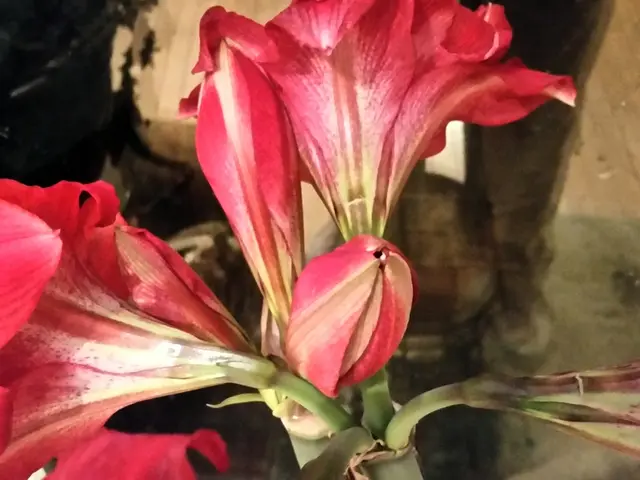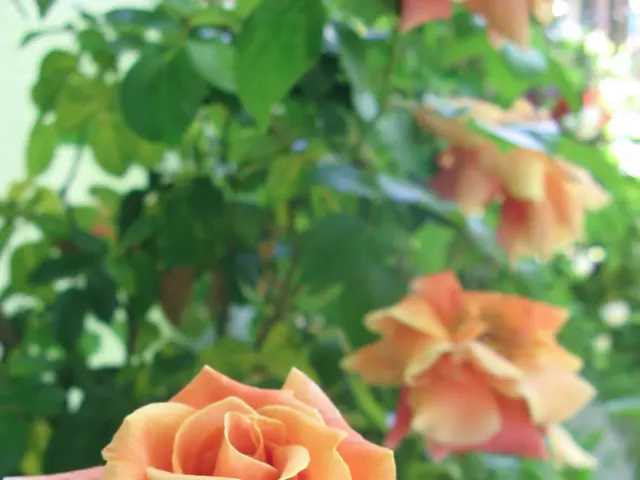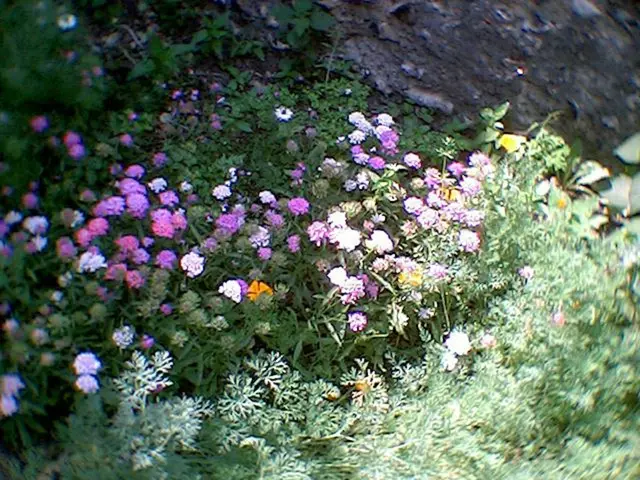Rosebushes and their common ailments: Recognizing and Addressing Prevalent Maladies
Roses, with their vibrant colours and enchanting fragrances, are a beloved addition to many gardens. However, these beautiful plants are prone to a range of diseases that can cause significant damage. This article will explore three common rose diseases – black spot, powdery mildew, and rose scale – and provide cultural practices for prevention and treatment.
**Black Spot**
Black spot, characterized by dark, circular black spots on leaves with feathered edges and a yellow halo, is a prevalent rose disease. Infected leaves turn yellow and drop prematurely, leading to defoliation. The disease typically starts on lower leaves and moves upward. Spots can develop white or greyish centers in humid conditions, which can be confused with powdery mildew.
**Powdery Mildew**
Powdery mildew appears as a soft white or gray powdery coating on leaves, stems, and sometimes buds. The fungus thrives in humid environments but can be controlled by keeping foliage dry. Leaf discoloration and distortion may occur.
**Rose Scale**
Rose scale is an insect pest causing disease-like symptoms. Small white or grayish waxy bumps on stems and leaves weaken the rose, resulting in yellowing leaves and poor growth.
**Cultural Practices for Prevention and Treatment**
1. **Watering** - Water at the base of the plants early in the morning to keep foliage dry and reduce humidity around leaves, which helps prevent powdery mildew and black spot. - Avoid overhead watering and late evening irrigation to minimize leaf wetness that favours fungal growth.
2. **Pruning and Sanitation** - Regularly prune to improve air circulation and light penetration within the plant canopy. - Remove and destroy all infected leaves, stems, and buds promptly. Do not compost diseased material as fungal spores can survive in debris. - Sanitize pruning tools between cuts to prevent spreading infections.
3. **Monitoring and Early Action** - Inspect plants regularly for early symptoms of disease or pests. - For powdery mildew and black spot, early removal of infected tissue and application of preventive fungicides (such as sulfur-based or systemic fungicides for severe cases) can control spread.
4. **Additional Prevention** - Select disease-resistant rose varieties to reduce susceptibility to black spot. - Manage garden humidity by spacing plants adequately and avoiding overwatering, to reduce fungal infection risks.
By combining these cultural practices – proper watering, pruning, sanitation, early detection, and resistant varieties – gardeners can significantly reduce the incidence and severity of common rose diseases, ensuring healthier, more vigorous rose bushes with vibrant blooms.
For more gardening tips and insights, follow Glen, a gardening expert with over 15 years of experience. His approach to rose bush care is preventative, focusing on maintaining healthy growth and minimizing issues. With the right care and attention, your rose garden can flourish.
Maintaining a healthy home-and-garden lifestyle includes taking care of roses, as these plants can be affected by various diseases such as black spot, powdery mildew, and rose scale. To prevent and treat these diseases, gardeners can implement cultural practices like watering early in the morning to keep foliage dry, pruning to improve air circulation, promptly removing infected leaves and debris, sanitizing pruning tools, regularly inspecting plants for early symptoms, using disease-resistant rose varieties, and managing garden humidity by spacing plants adequately and avoiding overwatering. By following these practices, you can create a vibrant and flourishing home-and-garden lifestyle that includes a beautiful rose-filled garden.








